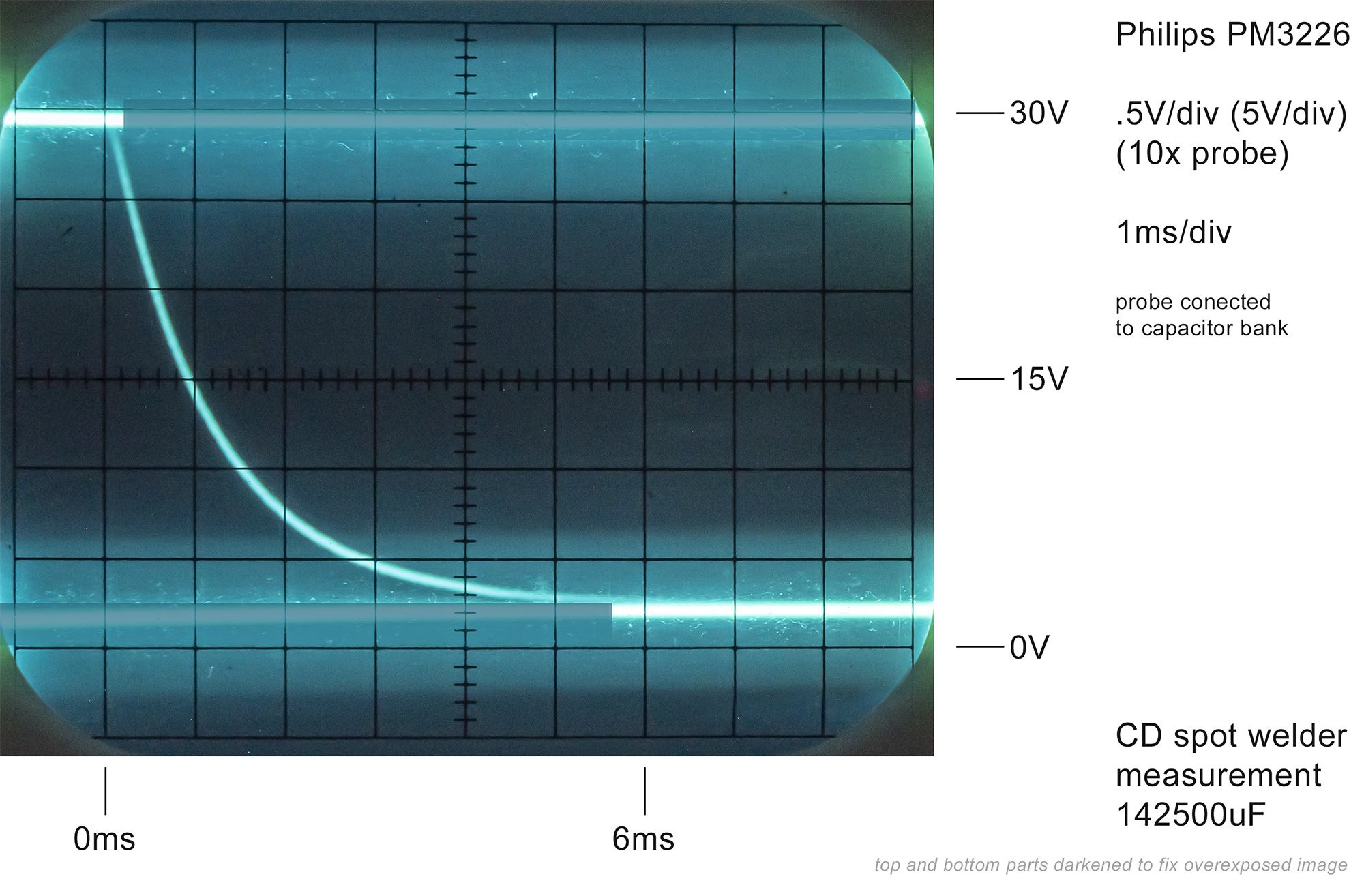I managed to capture oscilloscope image of the pulse with an old analog Philips PM3226 oscilloscope. It was a bit tricky, as analog scope don't have digital storage capabilities, so I put a camera in long exposure mode and tried to capture the trace. I measured the voltage drop in DC mode. It worked, and the observations are as follows:
- Capacitors are discharged in 6 milliseconds
- voltage drops in half within 1 millisecond
- minimum voltage doesn't go to zero, but to around 2V (that's because of SCR threshold voltage)
The probe was connected to the capacitor bank as that was the simplest thing to do. The test was done while spot welding two nickel strips. I guess I could also measure the voltage drop across the welding lead.
If I get the math right (I entered discharge time of 0.001s from 30V to 15V into this calculator https://www.digikey.com/en/resources/conversion-calculators/conversion-calculator-capacitor-safety-discharge and got 0.01012418ohms) the pulse should be close to 3kA.

Discussions
Become a Hackaday.io Member
Create an account to leave a comment. Already have an account? Log In.